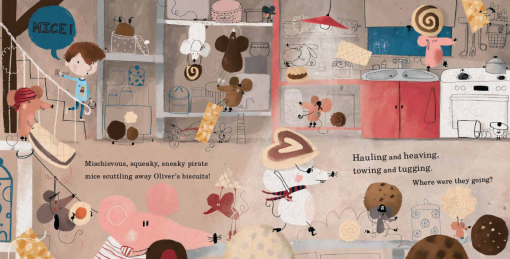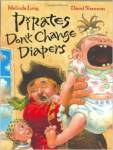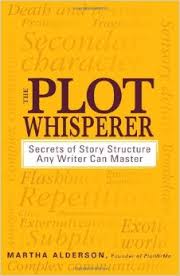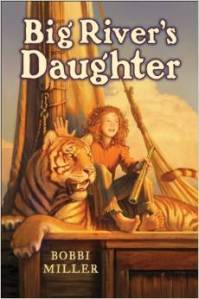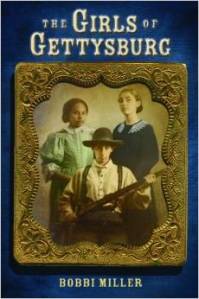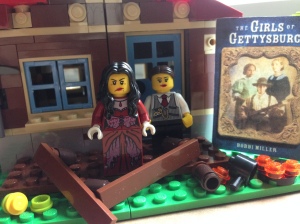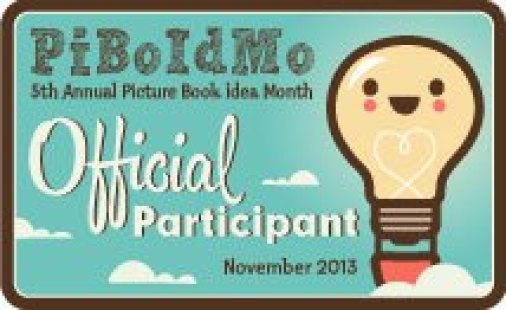Hi, Clare,
So happy to have this chance to interview you today. First of all, I love the humor in How Rude! And the illustrations by Olivier Tallec add to the fun.
Here’s Clare Helen Welsh. . .

Can you tell us what inspired you to write this story?
How Rude! started out as a text called Don’t Poke the Penguin! I love stories that escalate in tension and then culminate in chaos. I could also see the potential for humour in a book where two characters were in conflict. Throw in a perfectly prepared tea party and you’ve got How Rude! My story was submitted to the team at Quarto by my agent, Alice Williams. It had a face lift under Quarto’s guidance, in which I rewrote it from third person narrative to dialogue only …and changed the animal, too! I’ve always wanted to write a dialogue-only text, so I was thrilled when the editor suggested we give it a try. I’m so pleased with the result!
Can you give some tips for writing humorous picture books?
I don’t think I’m a naturally funny person (my husband would agree!), but there is fun and joy to be found all around us, all of the time. In my experience as a school teacher, and a Mum to young children, there is never a dull day. I often write notes in my iphone; words, phrases, altercations… anything that tickles me! Picture books are definitely a team effort though; a culmination of the input from agents, editors, illustrators, art directors… who all help make the story the best in can be.
You’ve done a great job with minimal text. Do you have any tips for telling a story in so few words?
Thank you! Edit, edit, edit! All my picture book texts begin long, and then I cut, cut, cut leaving only the essential in.
If we look at the text alone, it’s hard to tell what illustrations might be paired with the words. Did you have illustrator notes?
Yes, I always include illustrator notes in my submissions, since I tend to think very visually and leave space for the illustrations to tell the story. I realise, though, they are a bit of a ‘marmite’ topic with industry professionals. But in my experience, if you only use them when they are essential, write them in a different colour and format them at the start or end of a spread (rather than in the middle of the text) they don’t put editors and agents off.
Did you and the illustrator have any contact while the book was in progress?
I often get asked this question, and it’s something I hadn’t really realised when I first became a writer. But no, all the communication and back and forth was via the editor and art directors.
What surprised or pleased you most when you saw the illustrations?
I loved the simplicity of Olivier’s work. He conveys so much with so little. He also had a unique style that was quite unlike anything I’d seen before in the UK.
What do you hope children will take away from the story?
In my job as a school teacher, and personally, I really value kindness and being considerate of other people’s feelings. Any story that helps children develop empathy and seeing things from somebody else’s point of view, is a story worth telling in my opinion.
Did you base your characters on anyone you know?
I can’t say that the story was inspired by any one particular true-life event or person. But certainly, family life and over ten years teaching experience provided plenty of material, some of which I’ve kept back for further Dot and Duck adventures!
Did you love to read as a child? If so, can you tell us some favorite books?
In all honesty, I don’t recall being an avid reader as a child. But there are a few books that stick firmly in my mind.
Burglar Bill, by Janet and Allan Ahlberg

Burglar Bill is one of my all-time favourite reads. It’s dangerous, just my kind of humour and the repetition allows readers to anticipate and join in with the story. This is certainly something I aspire to emulate in my texts. I also love the way that the dialogue reflects the characters. There’s no mistaking who is speaking; “That’s a nice toothbrush. I’ll ’ave that!”
As a writer, this is something I don’t find easy. I work hard to keep my authorial voice out of my character’s dialogue. Here’s Sneaky McSqueaky from Aerodynamics of Biscuits, illustrated by Sophia Touliatou; “Climb aboard! Let’s get some cheddaaaaarrrr!”

‘Peepo,’ by Janet and Allan Ahlberg
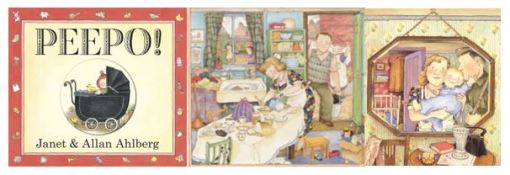
I also vividly remember reading Peepo at many a bedtime. Again, there’s the lovely language and repetition. But I also loved the interactive die cut hole, which is an important reminder of the reason I write picture books in the first place; to bring children and grownups together to share a special moment in their busy lives. I now use this book in schools to teach about the past! The detailed illustrations are a great talking point: coal shovels, bed warmers and war time uniforms.
If I can learn something from a book, then I personally love it all the more. I have a real interest in using books to help children deal with difficult issues. My first picture book with Little Tiger Press, The Tide, is a text to support children with a family member living with dementia. It publishes in the first half of 2019 and is illustrated by the incredible Ashling Lindsay.
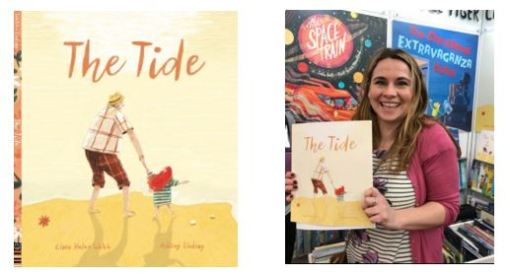
The ‘Mr. Men’ and ‘Little Miss’ Books by Roger Hargreaves

I remember my Nan having a whole set of these books! My favourite was definitely Mr. Tickle, which I would come back to again and again and again. And what a perfect accolade for a book! To have created a plot so well formed and satisfying, that readers come back to it over and over.
How Rude! is a character driven story, too, which uses humour to tell a tale of kindness, manners and friendship. It gets more and more chaotic with every page turn but has that satisfying ‘awwww’ moment at the end as well. There are plans in the pipeline for more Dot and Duck adventures. I can only hope that these stories bring a snippet of the enjoyment I had from the Mr. Men and Little Miss books.

When did you know you wanted to be a writer?
I wrote ‘to write a book’ on a New Year’s ‘to do’ list in 2012. I love challenges, trying new things and being creative. I love lists, too! But I had no idea just how much I was going to love writing. It’s changed my life for the better and I wouldn’t be without it now.
Did you have any childhood dreams for when you became an adult? If so, did they come true?
I remember in early years, wanting to be a teacher like my Nanna 😊, which was a dream that became a reality in 2006. For a while, during my teenage years, I wanted to be an art psychologist, combining my love of Art and Psychology. In a funny kind of way, I feel like I have achieved this goal, but via a slightly different route.
What are you working on now?
I am currently trying my hand at writing non-fiction picture books. I’m also working on a chapter book for children aged 7 yrs+ about a practical and creative female inventor. I don’t know if anything will come of it, but I’m very much enjoying the challenge!
Can you tell us a bit about some of your other books?
My first picture book was called ‘Aerodynamics of Biscuits’ and was published in 2015.
I have six further picture books in development for 2019 and 2020.
I also write early readers for a very popular early reading scheme.
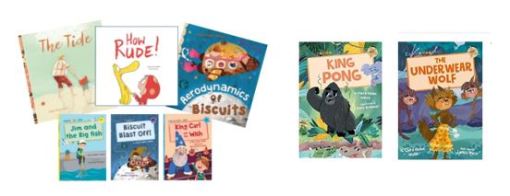
Some random questions just for fun:
Did you ever run away from home?
Once! My Mum doesn’t remember, but I recall the whole two minutes vividly.
If you could have any pet in the world, what would you choose?
A hypoallergenic dog that didn’t set off my allergies!
When do you like to write?
Mostly late at night when my family are all asleep and there are no distractions.
Are you an early bird or night owl?
Both! I takes naps when I can.
What was your biggest fear? Did you get over it?
Speaking in front of a large group people. And yes, I enjoy it now …but I do prepare and power dress!
Thank you, Laurie, for a really fun interview and your interesting questions!
You’re welcome, Clare. You gave us some fun answers along with lots of inspiration. I know readers will be looking for this book. You can find How Rude! at Amazon and Book Depository (free worldwide shipping).
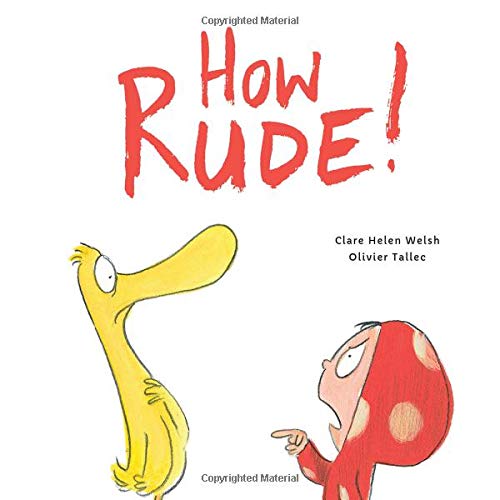
Readers, Clare shared some of her favorite picture books from childhood. What are yours?
Clare is a primary school teacher and children’s author who lives in the South West of England with her husband and two children. She writes a range of different picture books, including funny and quirky and sensitive and emotional, but always hopes her books bring a little added something to story time. You can find out more about Clare here on her website www.clarehelenwelsh.com or by following her on Twitter @ClareHelenWelsh. She also has a Facebook page. She is represented by Alice Williams at Alice Williams Literary.





